When Aviation with its AAM concept enters Public Transportation along side and at level with current Land-based Public Transportation, many eVTOL developers and infrastructure planners have forgotten to include the important minority of disabled passengers.
As an upcoming add-on mode of daily public transportation to the total grid of existing modes of daily public transportation like busses, trains, trams, metro's, taxi's, ferries etc., AAM (Advanced Air Mobility) is meant to like current modes of public transportation to include all users, all citizens, all visitors etc., wanting and needing the services that AAM will provide in an integrated MaaS system; Moving people from A to B in an easy to use and seamless and comfortable way.
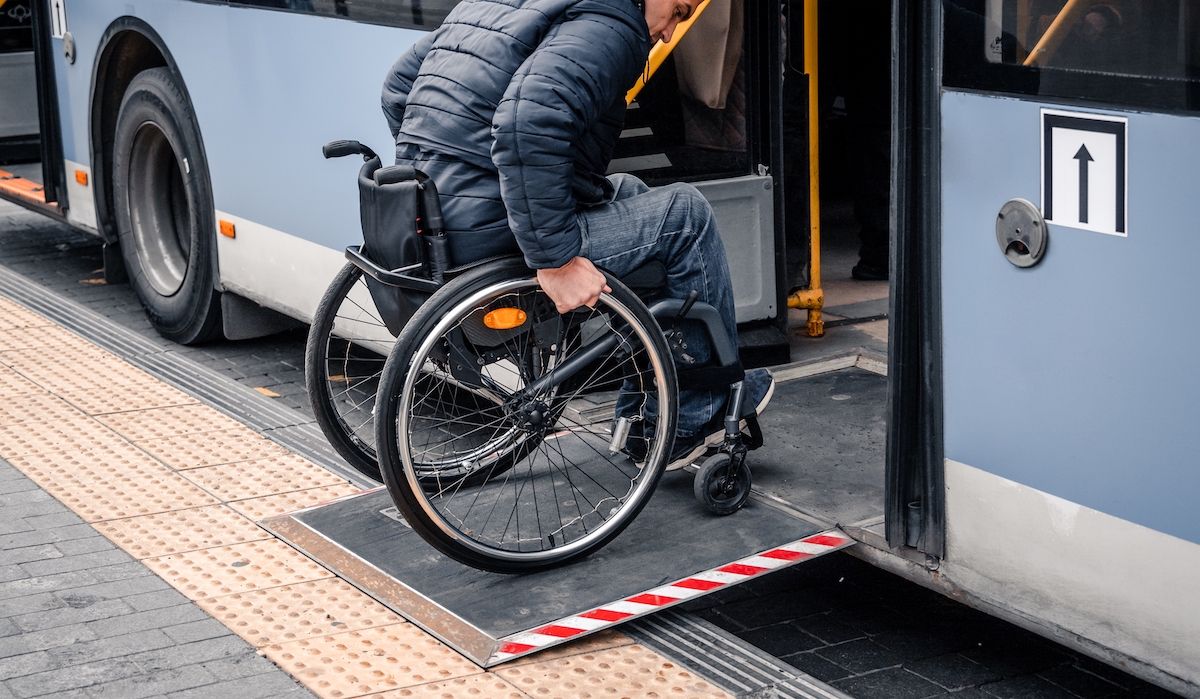
In most developed countries, public transportation has therefore for decades adapted to include access for those users who are not as fortunate as the majority; being able to walk freely and enter/exit public transportation with little to no assistance.
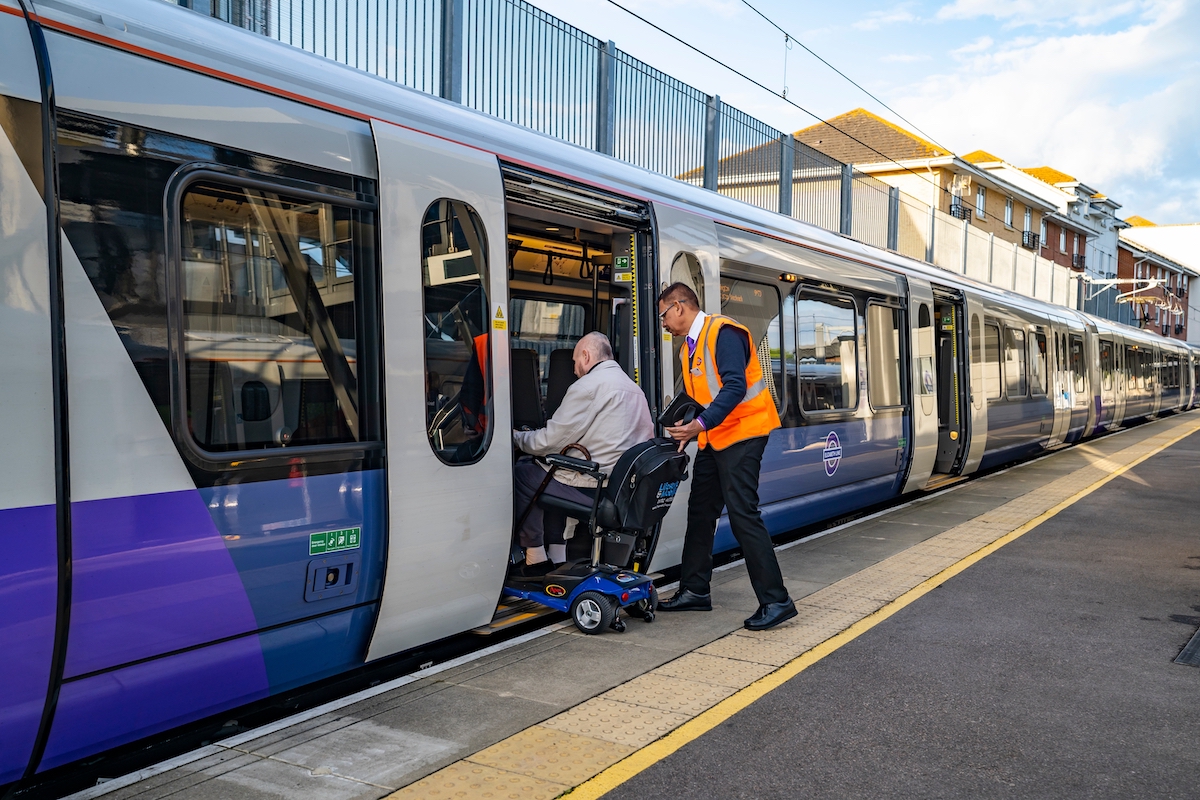
Users with disabilities who for example have difficulties to walk without a walker or a cane or who might need a wheelchair on a daily basis, by for example developing low-floor busses, trams and trains, making it relatively easier for such user to enter and exit those modes of public transportation.
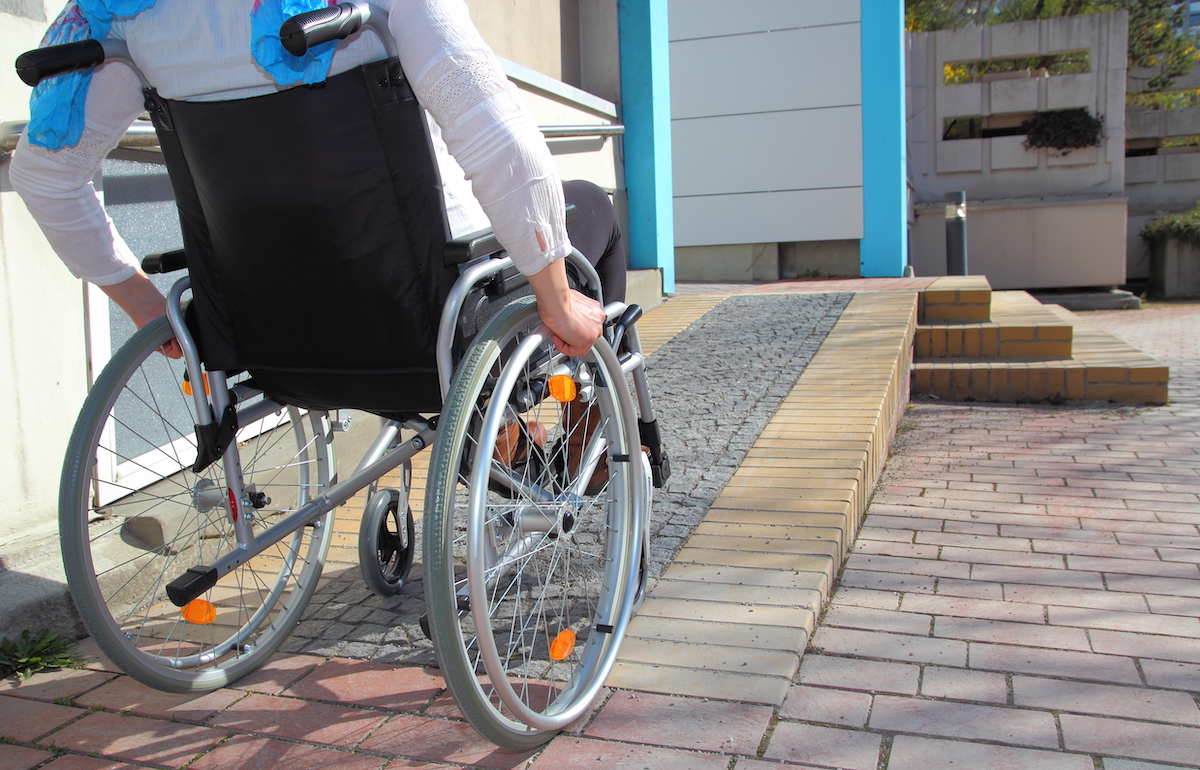
Even buildings with public access has to follow certain building codes/regulations such as providing easy access for disabled people with items like ramps, elevators for buildings with multiple levels, dedicated disability parking spots near an entrance etc..
But not Aviation
Though Aviation has avoided and not adapted their aircrafts nor many of their services in the same manner and to the same standard as other public modes of public transportation has, as the documentary from VICE News below tells.
To date, unless a jet bridge is used to enter/exit an airliner, it is very difficult for a wheelchair user to enter/exit even a large aircraft.
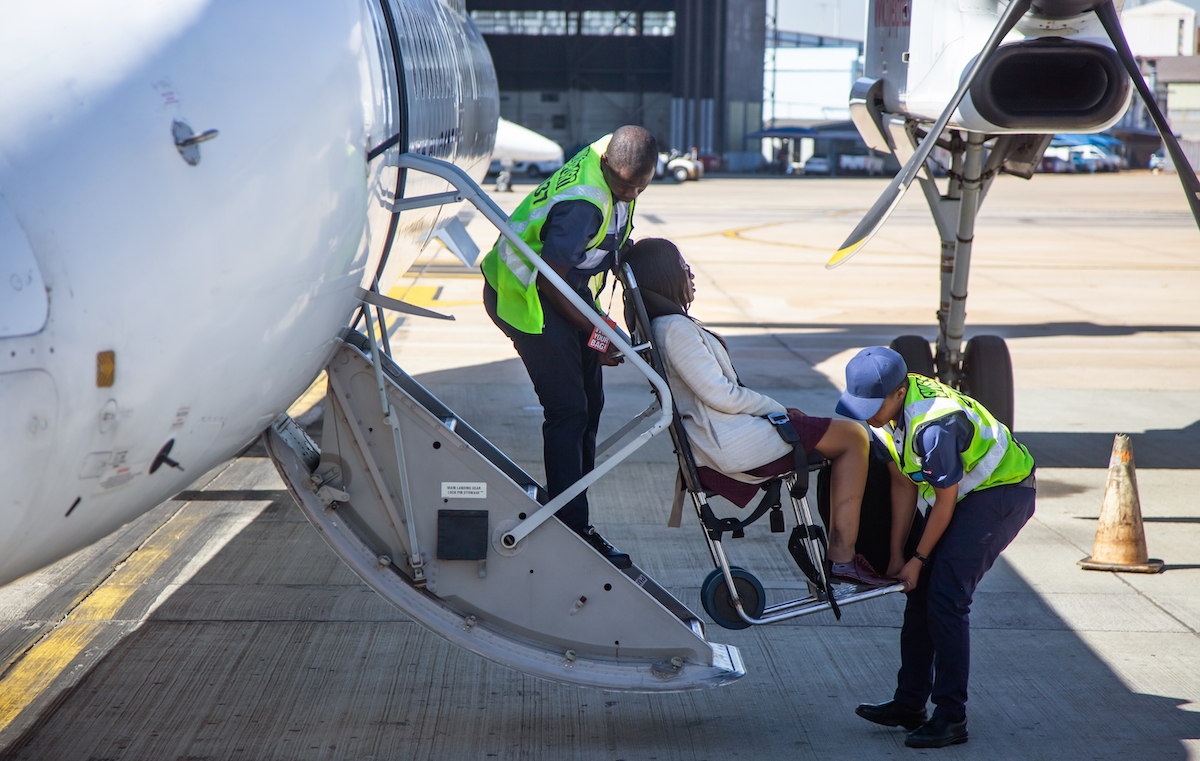
The difficulties goes as well for the staff that has to literally physically bend over in such a manner that it can take a toll on their back and without the proper tools, one day maybe make them disabled as well.
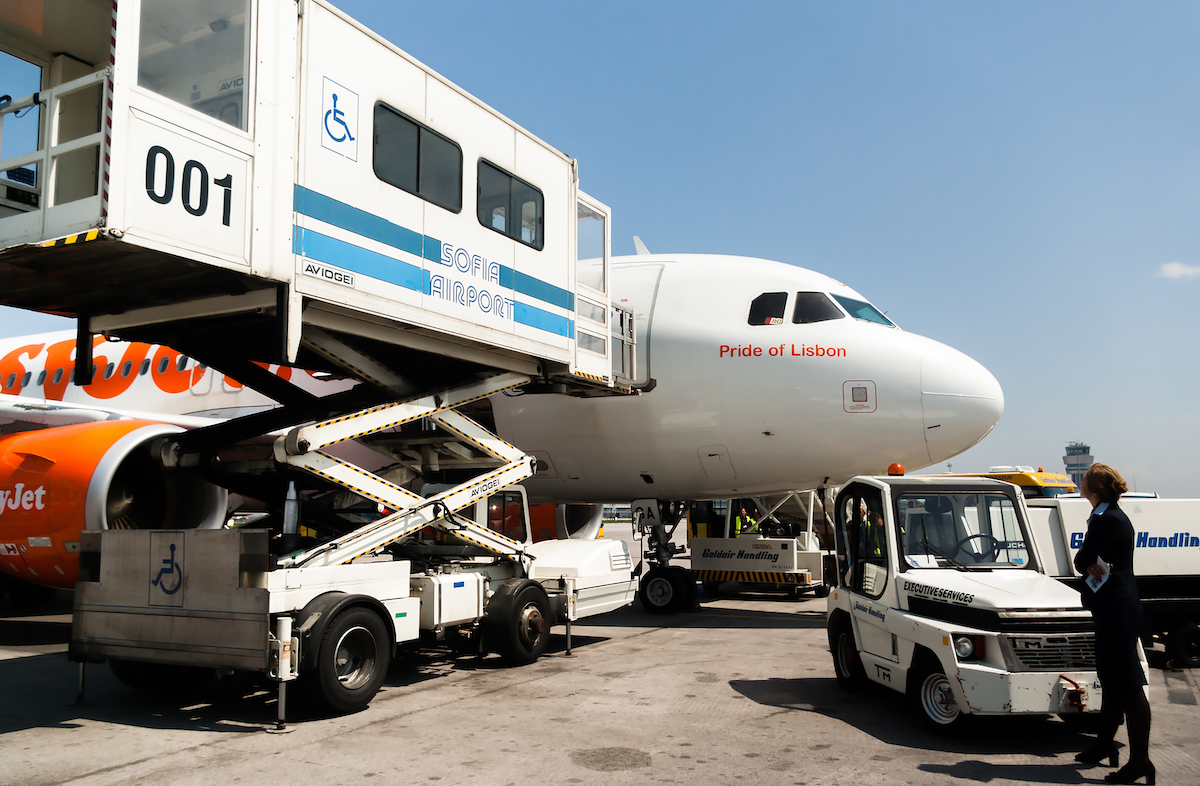
Without a jet bridge, often the user either has to be carried physically onboard or a truck with a lift used in the same manner to load bulk cargo has to be used ... not very easy, quick, seamless nor comfortable nor gracefully handled compared to how other modes of land-based public transportation can handle this group of users.
"Eighty percent of the wheelchair community does not fly because of a risk to their physical selves or a loss of their wheelchair due to damage" - President of All Wheels Up, Michele Erwin
Hands-On experience
Having for the past two decades as a helicopter pilot flown sightseeing tours and OnDemand flights for several more or less disabled passengers in a small helicopter with a little door entrance - and seen family members ending in a wheelchair primarily due to lack of proper tools lifting/moving by hand other disabled patients and what impact that does to their and their family's life quality, I have on first hand seen these issues and effects it has.
There can be reasons (or excuses) for current procedures and lack of proper tools, such as usually a flight is a longer trip and not done on an everyday basis for most people, so the entrance/exit of an aircraft might not seem to be such a big issue, when only used on a couple of occasions a year. Or an aircraft has to have a certain design or shape to function what it does best, fly at high altitudes with pressurized cabins.
Though it looks more like excuses than technical reasons, because there are small and large airplanes with pressurized cabins designed with entrance like a private jet BUT also with a big door for easy access for cargo, bulk luggage - or a wheel chair such as the Pilatus PC12, proving that even a small airplane can be designed to have space for a large door and with a simple genius tool in hand, making it relatively simple, easy, comfortable and respectful to enter/exit an airplane in a wheelchair, as this video below shows.
Get up to standard
If the goal for AAM and the eVTOL, eSTOL and eCTOL aircrafts being developed is to integrate into the grid of existing daily use of public transportation in as a strong, seamless way and easy to use for the disabled users as todays land- and sea-based modes of public transportation has been able to offer for decades, and with regulators breathing down the aviation industries neck with possible upcoming legislations to ease access for passengers with disabilities onboard public accessible aircrafts, it is incomprehensible that so few aircraft designers and developers have designed their brand new aircrafts with a mindset how on a daily basis to include easy access for disabled users, knowing (or they should know) that the general public demand from politicians and governments has changed land- and sea-based public transportation to include disabled users easy access to daily usage of public transportation and public infrastructure.

Aircraft designers designing aircrafts for daily public transportation needs to get up to standard where ground-based public transportation has been at for decades, like:
- Include a big sliding door like many helicopters has such as the Airbus H125/H130 or a big door such as the Pilatus PC12.
- Preferable design with high-wings for easy un-interrupted access to/from and around the cabin.
- For multi-rotor eVTOL design, not having rotors/propellers at knee height.
- Not designing the entrance to the cabin ONLY with a small private jet like a door staircase.
- Not designing the entrance to/from the cabin above the wing on a low-wing aircraft.
At Copenhagen Helicopter, easy access for passengers with disabilities is one of the main characters we evaluate and grade if a certain aircraft design used for daily public transportation, has a place and a business case in the public space of transportation. Those designs who don't have this, we expect have little chance to become publicly accepted despite how good in other terms the aircraft might be otherwise.
No other form of transportation trains, buses, boats, forces you to give up your mobility device when you board. The same should be true for airlines. pic.twitter.com/XkmcEwaHCH
— Secretary Pete Buttigieg (@SecretaryPete) October 31, 2022
Nearly 2 percent need wheelchairs
Nearly 2 percent of the worlds population need the use of a wheelchair to get around in their daily life. With approx. 7,8 billion people on this planet, that equates to approx. 140 million people around the world.
Today there are 4 million wheelchair users in the USA, spending approx. 17 billion USD annually on travel expenses. Similarly number is the same for wheelchair users in Europe.
Add to that percentage those who need a walker or a cane, that would benefit greatly with a design giving easy physical access to enter and exit an aircraft.
Bad for business not to be inclusive
As an operator to be accepted by the public integrated in the grid of public transportation and the future of MaaS, if not operating an aircraft suitable designed to accommodate disabled passengers like other modes of public transportation does today, we at Copenhagen Helicopter know by experience from other modes of transportation it can be bad for that operators business and for example risk loosing out to competitors for winning possible public routes.
Just like with other modes of public transportation, the turn-around- or midway stop-time for AAM is to be kept at a very minimum of merely a very few minutes to utilize the aircraft most efficiently and not to delay other passengers onboard continuous journey.
On top of that, consider that often there will be no other staff at a Vertipad other than the single pilot flying the aircraft to assist the disabled passenger - and in the future, no pilot will be there when the aircrafts goes fully autonomous, just like the Metro is in Copenhagen, demanding the disabled passenger being able to enter/exit the aircraft more or less on their own, which require a design making that possible.
Technical solutions exist
Technical solutions can be made to accommodate disabled passengers. As the work, studies and support made by the organization All Wheels Up shows.
And we know because just like an operator figured out how to make a cost-effective and mobile wheelchair lift for the Pilatus PC12 aircraft for the need of a specific user, at Copenhagen Helicopter we designed a cost-effective lift to be stowed away onboard for use in most helicopters and some small airplanes we expect to test later this year.
Because in that part of aviation of pleasure flights, if not lifted manually by staff, lifts for disabled passengers are bulky and non-mobile as the video above shows and why should a wheelchair user not be allowed out on excursions where the helicopter lands during a sightseeing tour, when all the other non-disabled passengers can and technical solutions can solve it ?

